Majestic Care ABA Therapy in Colorado provides individualized, evidence-based ABA therapy to support children with autism in building communication skills, fostering social development, and gaining independence.






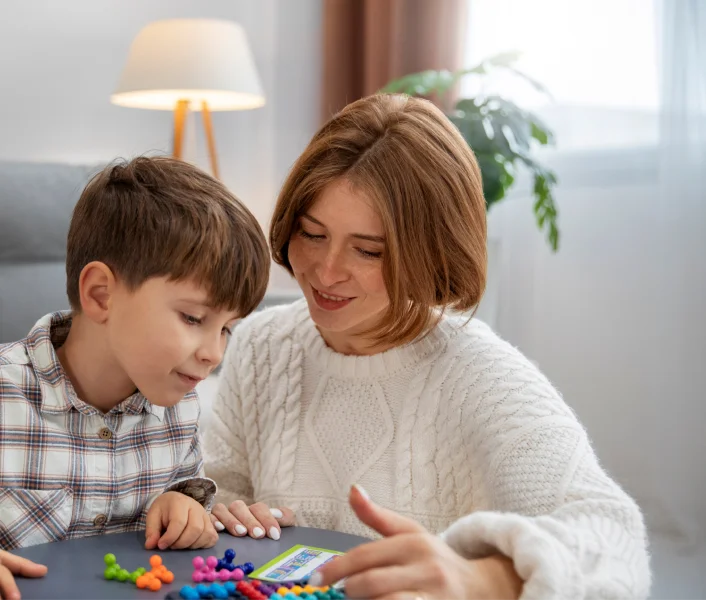
At Majestic Care ABA Therapy, we believe that every child deserves the opportunity to reach their full potential. Our comprehensive ABA services are designed to support children in overcoming developmental challenges, building essential life skills, and gaining confidence in their abilities. We take a family-centered approach, ensuring that parents and caregivers are actively involved in the therapeutic process for lasting success.
At Majestic Care ABA Therapy, we understand that navigating insurance coverage for ABA therapy can feel overwhelming. Our dedicated team is here to make the process simple and stress-free by helping you confirm your treatment coverage.

At Majestic Care ABA Therapy, we proudly serve families across multiple states, offering compassionate, high-quality ABA therapy in convenient locations. Our centers are designed to provide a supportive and structured environment where children can learn, grow, and thrive with the guidance of experienced professionals. Whether you’re looking for in-home, clinic-based, or community-centered therapy, we are here to support your family every step of the way.
Majestic Care ABA Therapy in Colorado provides individualized, evidence-based ABA therapy to support children with autism in building communication skills, fostering social development, and gaining independence.
Majestic Care ABA Therapy in North Carolina offers compassionate, evidence-based ABA therapy to help children with autism develop essential life skills, enhance social interactions, and achieve greater independence.
Majestic Care ABA Therapy in South Bend, Indiana, provides personalized, evidence-based ABA therapy to support children with autism in developing communication, social, and daily living skills for greater independence and success.
Majestic Care ABA Therapy in McCordsville, Indiana, offers individualized, evidence-based ABA therapy to help children with autism build essential life skills, improve communication, and foster independence.
Majestic Care ABA Therapy in Westfield, Indiana, provides tailored, evidence-based ABA therapy to help children with autism develop communication, social, and daily living skills in a supportive and nurturing environment.
Majestic Care ABA Therapy in Fishers, Indiana, offers compassionate, evidence-based ABA therapy to help children with autism build essential skills, enhance social interactions, and achieve greater independence.
Contact us to discuss your child’s needs and complete paperwork.
A BCBA evaluates your child, and we assist with insurance approval.
We create a personalized ABA plan and begin therapy sessions.
Stay informed with the latest in ABA therapy, autism research, and developmental insights through the Majestic Care ABA Therapy Blog. Our blog serves as a valuable resource for parents, caregivers, and professionals looking to expand their knowledge and stay updated on the latest trends in behavioral therapy and child development.
When a child is diagnosed with Autism Spectrum Disorder (ASD), parents often struggle to find therapy that truly fits. In-home ABA therapy offers a simple solution by bringing structured Applied Behavior Analysis sessions into the child’s daily environment. This approach adds comfort, lowers stress, and encourages active participation while teaching key life and social skills. It also lets families play a hands-on role in learning. So, what makes in-home ABA effective? How does it help children build skills naturally in a supportive space? Let’s explore the main benefits of this personalized, family-friendly approach.
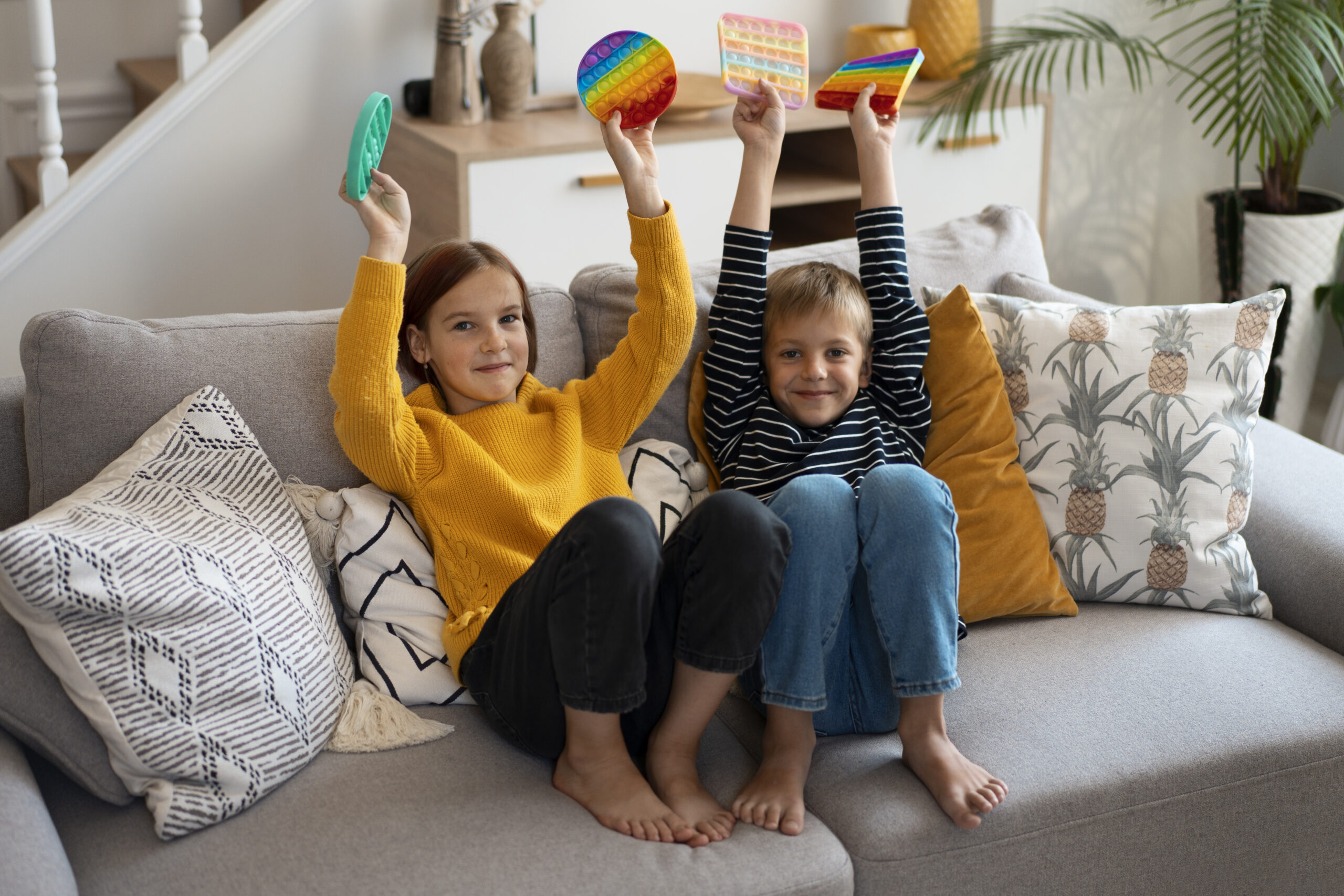
A well-structured home environment plays a critical role in ABA therapy at home. According to Dixon et al. (2022), children receiving therapy in familiar settings demonstrate greater engagement and skill acquisition compared to clinic-based sessions. Simple environmental modifications, like reducing noise, decluttering, and using soft lighting, can make sessions more comfortable.
Children often respond well to predictability. Visual schedules, picture cues, and social stories help set clear expectations. When routines are consistent, children feel secure, reducing anxiety during transitions. For example, a visual schedule indicating snack time or playtime allows children to anticipate the next activity, fostering smoother participation.
Children with ASD may have sensory sensitivities. In-home ABA therapy allows therapists to adjust the environment to the child’s needs, whether that involves lowering lighting, providing headphones, or including calming textures. This personalized approach encourages engagement by minimizing stressors and supporting better focus on learning tasks.
| Strategy | Purpose | Example |
| Decluttered Space | Reduce distractions | Clear floor area for activities |
| Sensory-Friendly Lighting | Minimize overstimulation | Soft lamp instead of harsh overhead light |
| Visual Cues | Promote routine & understanding | Picture schedule for daily tasks |
| Accessible Materials | Encourage independence | Labeled bins for toys and tools |
The cornerstone of home-based ABA therapy is individualized attention. Therapists work one-on-one with the child, using everyday routines and household items to teach social, communication, and daily living skills. Choi et al. (2021) highlight that individualized interventions tailored to the child’s environment lead to improved skill acquisition and behavior management.
Home settings provide countless chances to integrate therapy into daily life. Mealtimes can teach requesting and turn-taking. Brushing teeth or dressing can reinforce sequencing and independence. These “real-world” applications help children generalize skills beyond therapy sessions, making learning meaningful.
Parents are actively involved in in-home sessions, observing and learning reinforcement techniques. Therapists coach families on strategies to use throughout the day, such as prompting communication or encouraging sharing. This involvement strengthens skill retention and ensures consistency across settings.
In-home ABA allows therapy to fit seamlessly into family schedules. Sessions can be timed during high-need periods, like mornings or bedtimes, maximizing practical skill practice. This flexible approach helps children see therapy as part of their natural routine rather than a separate, stressful event.
Many children experience heightened anxiety in unfamiliar environments. In-home ABA therapy reduces stress by keeping sessions in a predictable setting. Therapists can quickly recognize and respond to signs of overwhelm, adjusting activities to maintain comfort. The calming environment encourages participation, enhancing therapy outcomes.
Home-based therapy facilitates continuous observation and data collection. Therapists can track behaviors, measure skill acquisition, and adjust plans in real time. According to Dixon et al. (2022), this tailored approach results in measurable gains in adaptive behaviors and supports long-term development.
In-home ABA is not limited to academic or social skills. Children learn practical life skills, like cleaning up toys, preparing snacks, or interacting with siblings, directly in their environment. These lessons reinforce independence and daily functioning, making therapy both functional and comprehensive.
Therapists work closely with parents, creating open channels for questions, feedback, and adjustments. This partnership ensures strategies are aligned with the child’s daily experiences, providing continuity between therapy and everyday life.

| Benefit | Description | Example |
| Comfort | Familiar environment reduces stress | Therapy in the child’s bedroom or living room |
| Engagement | Sensory-friendly adjustments improve focus | Soft lighting, minimal noise |
| Practical Learning | Real-life tasks teach functional skills | Snack-time communication practice |
| Family Involvement | Parents reinforce skills throughout the day | Parent-led practice of learned behaviors |
| Flexibility | Therapy aligns with family schedule | Morning or evening sessions as needed |
Choosing the right in-home ABA therapy provider can make a big difference in your child’s growth and your family’s daily life. Here are key things to consider:
Choosing the right provider can make in-home ABA therapy effective, supportive, and empowering for both children and families.
Not at all. In-home ABA fits smoothly into your daily life. Therapists use your living room, kitchen, or even your garden for natural learning moments. Usually, only a small, tidy area is needed for focused activities. You don’t need a dedicated “clinic room” to see real progress.
Most of the time, yes. ABA therapy is often considered medically necessary for Autism Spectrum Disorder (ASD) and covered by major insurance plans. To be sure, contact your insurance company and ask about coverage for “Applied Behavior Analysis” or “Home-Based ABA Services.” Many providers can also help verify benefits.
Absolutely. One big advantage of in-home care is coordination. Your BCBA (Board Certified Behavior Analyst) can communicate with teachers, occupational therapists, and speech-language pathologists. This keeps learning consistent at home, at school, and in the community.
In-home sessions often include community-based instruction, like short trips to the park or doctor’s office. The goal is to practice skills in new places. Children may learn to wait patiently, follow directions, or manage sensory input in a structured, safe way.
Parental support is key. Providers offer coaching on ABA techniques and direct parent training. Resources may include tips for handling challenging behaviors, setting realistic goals, and connecting with local support groups or community services.
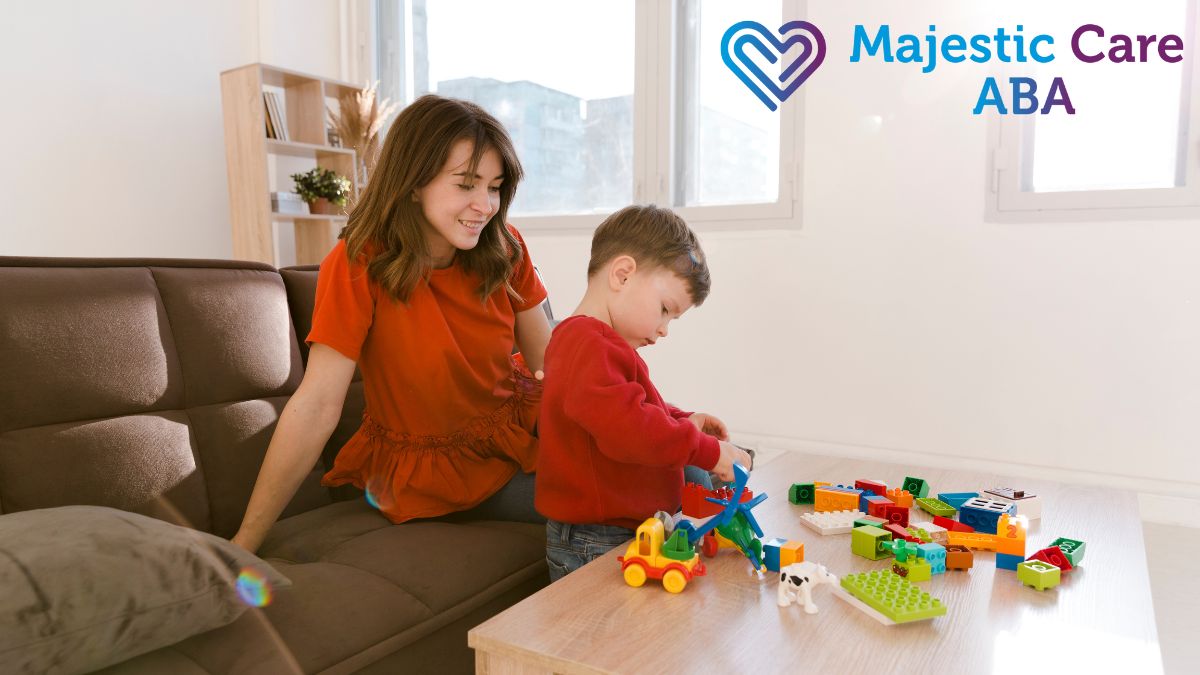
In-home ABA therapy gives children with autism a flexible, evidence-based approach that fits daily life. By bringing therapy into a familiar setting, Majestic Care ABA reduces stress, boosts engagement, and supports skill learning in real-world situations. Parents take an active role, reinforcing lessons while therapists tailor sessions to each child’s needs and interests. Research shows in-home ABA can improve daily skills, social interactions, and independence.
Families across Colorado find that Majestic Care ABA blends comfort, routine, and flexibility, helping children feel safe while making steady progress. If you want to see how in-home ABA could help your child, reach out today. Our team is ready to guide you, answer questions, and create a plan that fits your family. With the right support, children can grow confidently and build skills that make everyday life easier.
The moment your child is diagnosed with autism, a flood of questions comes up. What’s the best next step? Can I help my child reach their full potential? You’re not alone. Research shows early diagnosis and intervention are far more likely to produce long-term benefits in skills and behavior (NICHD – NIH). This is where ABA therapy for kids can make a real difference.
Applied Behavior Analysis (ABA) is the most well-researched method for children with Autism Spectrum Disorder (ASD). It’s a structured behavior therapy program that uses positive reinforcement to teach helpful skills. The goal is simple: give your child the strongest start possible. Because a young child’s brain is still forming, it’s highly “plastic,” meaning it’s more adaptable. Isn’t it exciting to think early, focused support can unlock your child’s potential?
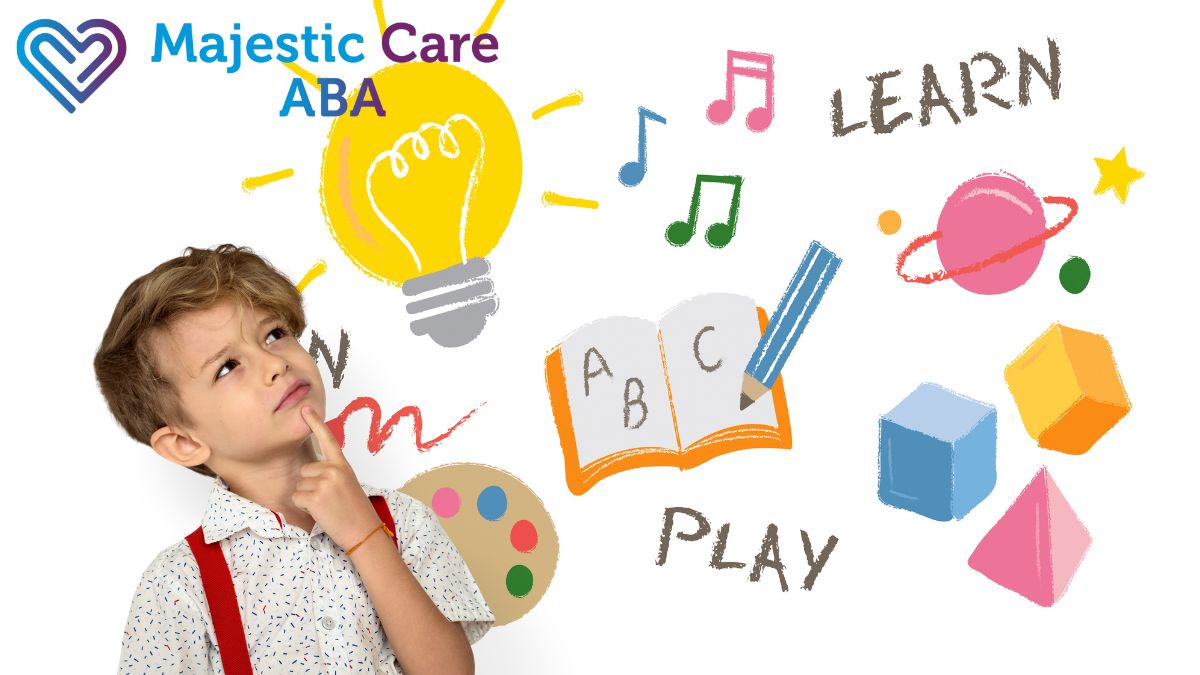
Early intervention means starting as soon as ASD is diagnosed or strongly suspected, often before age five. Why is timing so critical? The answer is neuroplasticity, the brain’s ability to adapt and change.
Here’s a striking fact: Dr. Ivar Lovaas (1987) found that nearly 47% of children who got intensive ABA therapy (25–40 hours per week) early on were later considered “indistinguishable from peers” in intellectual and educational abilities. Only 2% of the control group achieved this (Lovaas, 1987; McEachin, Smith, & Lovaas, 1993).
More recent studies show similar success. The Early Start Denver Model (ESDM), a naturalistic ABA approach, increased children’s IQ by an average of 15.4 points, compared to just 4.4 points in the comparison group (GlobalRPH). Think of early, intensive therapy as planting seeds during the prime growth season. It builds a strong foundation for hitting developmental milestones.
Does your child struggle to speak or understand language? ABA therapy for kids tackles this directly.
Real-Life Example:
Jacob, a 4-year-old with autism, learned to use a picture card through ABA therapy for kids to request toys. Within weeks, he used simple words, showed better eye contact, and had fewer tantrums. This functional communication boost increased his confidence and helped him engage positively with family and peers.
Worried about school readiness? Early ABA intervention can help.
Real-Life Example:
Lila, a 5-year-old with autism, struggled to focus during math lessons. Through early ABA therapy for kids, her therapist broke counting and number-matching activities into small, manageable steps. Within weeks, Lila completed math exercises with minimal prompts, improved attention, followed instructions consistently, and applied counting skills at home and school, boosting her confidence and classroom readiness.
Every parent dreams of an independent child. ABA builds independence one skill at a time.
Real-Life Example:
Ethan, a 6-year-old with autism, struggled with dressing and toileting. Through ABA therapy for kids, he learned step-by-step routines for hygiene and self-care. Within weeks, Ethan could dress himself, follow a bedtime routine, and use the bathroom independently, boosting confidence and laying the groundwork for lifelong independence.
Do tantrums or frustration disrupt daily life? ABA focuses on replacing problem behaviors with positive alternatives.
Real-Life Example:
Mia, a 4-year-old with autism, often threw toys when frustrated. Through ABA therapy for kids, her therapist taught her to request help using words and practiced turn-taking during ball games. Within weeks, Mia’s tantrums decreased, she shared more easily with peers, and used simple coping strategies to manage emotions.
Beyond home and school, ABA therapy empowers individuals with autism to thrive in everyday community life:
Real-Life Example:
Ella, a 7-year-old with autism, struggled in public spaces, often avoiding eye contact and interrupting others. Through ABA therapy for kids, she learned polite greetings, waiting in lines, and making eye contact. Over months, Ella became more confident in community settings, demonstrating self-advocacy and social competence while gaining lasting skills.
Looking for ABA therapy near me in Indiana or Colorado? Location matters less than quality. Focus on these features:
| Feature | Why It Matters |
| High Intensity | 25–40 hours per week for 1–3 years leads to strong long-term results (Autism Speaks). |
| Individualized Plan | One-on-one programs tailored to your child’s strengths and challenges work best. |
| Data Collection | Progress must be tracked constantly to adjust strategies effectively. |
| Family Training | Parents learn how to apply ABA at home, maximizing every opportunity. |
| Focus on Generalization | Skills should transfer to multiple environments through natural environment teaching (NET). |

A: No! ABA doesn’t suppress personality. It teaches essential skills for independence, communication, and coping, while reducing frustration.
A: Data identifies triggers disrupting sleep. Therapists use this information to create consistent routines and reinforce positive sleep behaviors.
A: Yes! ABA teaches complex social language, like sarcasm, conversation timing, and perspective-taking.
A: Absolutely! ABA uses interests as motivators. Trains can teach sequencing, turn-taking, or reward new communication skills.
A: ABA works for all ages. Older children and adults can learn adaptive behaviors, vocational skills, and independent living.

Early intervention ABA therapy for kids can make a real difference. At Majestic Care ABA, we tap into the young brain’s natural ability to learn. Our programs focus on building communication, cognition, independence, and social skills. We also replace challenging behaviors with positive alternatives, helping children succeed at home, in school, and in the community.
High-quality, intensive ABA isn’t just about managing a diagnosis; it’s about giving your child the tools to succeed. Starting early provides meaningful early learning support while boosting communication skills development, laying the foundation for confidence and long-term growth.
Families across Colorado and North Carolina have seen how individualized, evidence-based autism therapy for children transforms daily life. Kids gain the ability to express themselves, follow routines, and interact socially.
Reach out to Majestic Care ABA today to explore structured behavior therapy programs that help your child meet developmental milestones and unlock their full potential.
Key Points:
Autism doesn’t usually come alone. It often travels with companions—extra challenges that can make life more complex. For a parent, it can feel like you’re navigating shifting terrain: what looks like “autism behavior” might partly stem from anxiety, ADHD, or other overlapping conditions.
In this article we’ll dig into what comorbidity in autism means, how key conditions like anxiety and ADHD interplay, and practical strategies you can use (or ask professionals about) to support your child.
When we speak of “comorbidity,” we mean two or more co-occurring diagnoses or conditions. In the autism world, comorbidity is the norm, not the exception.
Autism (ASD) is defined by differences in social communication and restricted/repetitive behavior. But many individuals with ASD also have other diagnoses—anxiety disorders, ADHD, OCD, mood disorders, sleep problems, gastrointestinal issues, or intellectual disability, to name a few.
Why does comorbidity matter? Because it changes how a child behaves, what they struggle with day to day, and what interventions will work best. If a child with autism also has anxiety, a refusal to do a task may not only be about rigidity but fear; if ADHD is present, attention and impulsivity may muddy the picture of what “autism symptoms” truly are. Misreading the overlap can lead to partial or ineffective intervention plans.
Here are some guiding principles:
With that foundation, let’s explore some of the most common comorbidities seen in autism.

Anxiety is one of the most frequently co-occurring mental health challenges in children with autism.
Children on the autism spectrum often face daily stressors: unpredictable social demands, sensory overload (bright lights, noise, textures), transitions, uncertain routines, and difficulty reading others’ intentions. Over time, these stressors can heighten baseline anxiety.
Neurologically, anxiety and autism share some underlying mechanisms—for instance, over-responsivity in the amygdala and challenges in emotional regulation. It’s not uncommon for anxiety to amplify restricted/repetitive behaviors (as a coping strategy) or lead to avoidance, meltdowns, or shutdowns.
Anxiety in autistic children may not always look like what we expect (e.g. trembling or verbal worries). Some ways it shows:
Before presenting intervention ideas, here is a framing thought: treat anxiety within the child’s developmental and sensory profile. One-size-fits-all anxiety protocols often fail.
Here are evidence-informed supports:
When anxiety is addressed, you often see collateral benefits: fewer meltdowns, greater flexibility, better engagement in therapy and learning.

One of the most discussed comorbidities in autism is ADHD (Attention-Deficit/Hyperactivity Disorder). The overlap is significant and complicated.
Research estimates vary widely depending on the sample, but many studies report that 50% to 70% of individuals with ASD also meet criteria for ADHD symptoms (inattention, hyperactivity, impulsivity). Others report lower or higher rates depending on age and diagnostic method.
Conversely, children diagnosed with ADHD sometimes exhibit subclinical or mild autistic traits, suggesting a bidirectional relationship.
While autism and ADHD can appear to overlap in several ways, there are also key traits that set them apart. Understanding both their shared characteristics and distinct features helps clarify why some children show signs of both conditions while others fit more clearly into one profile. Here’s a closer look at the areas where autism and ADHD intersect—and where they diverge.
When ADHD coexists with autism, the challenges tend to intensify:
Because symptoms overlap, diagnosis requires careful, nuanced assessment. A multidisciplinary evaluation is ideal:
Clinicians must avoid “diagnostic overshadowing”—assuming all symptoms are due to autism and missing ADHD, or vice versa.
The good news: interventions can be tailored to address both sets of symptoms together.
Beyond anxiety and ADHD, several other conditions often present alongside autism. Below is a list of these comorbidities—with explanations and what parents should watch for.
Common comorbid conditions:
Each comorbidity adds layers of complexity. A child may have three or more overlapping conditions. As a parent, your best ally is clarity: identify which challenges are at play (or interacting), so each piece can be addressed.

When a child has autism and multiple overlapping conditions, the treatment plan must be layered and integrated. Below is a pragmatic, step-by-step approach you can use (or advocate for) with your child’s team.
Before choosing interventions, conduct a full evaluation (autism, ADHD, anxiety, learning, sensory). Use standardized tools, clinical interviews, observations, and parent/teacher reports.
Decide which issues are most impairing (e.g. anxiety that halts learning, ADHD that disrupts therapy). Begin with “high-leverage” interventions.
Include interventions across areas: behavior, mental health, medical, educational. Ensure they communicate and don’t conflict.
Your consistency matters. Train parents in behavior strategies, emotional coaching, communication systems. Support your own self-care too.
Ensure skills learned in therapy carry over to school, home, community. Use coaching, transfer trials, and coordination with educators.
Children grow, and comorbidity profiles shift over time. Reevaluate annually (or sooner) to catch emerging issues.

Applied Behavior Analysis (ABA) is often thought of as “just for autism,” but it has particular strengths when supporting children with overlapping conditions like ADHD, anxiety, or sensorimotor challenges.
Why ABA fits:
For example:
In fact, reviews of ABA with children and youth with autism show improvements across behavior, cognitive and language domains—as well as reductions in problem behavior.
When multiple diagnoses overlap, daily life can feel like a balancing act for families. Understanding what works—and what doesn’t—often takes patience, flexibility, and collaboration. Here are some practical ways parents can better navigate the complexities of comorbidity and support their child’s growth with confidence and clarity.
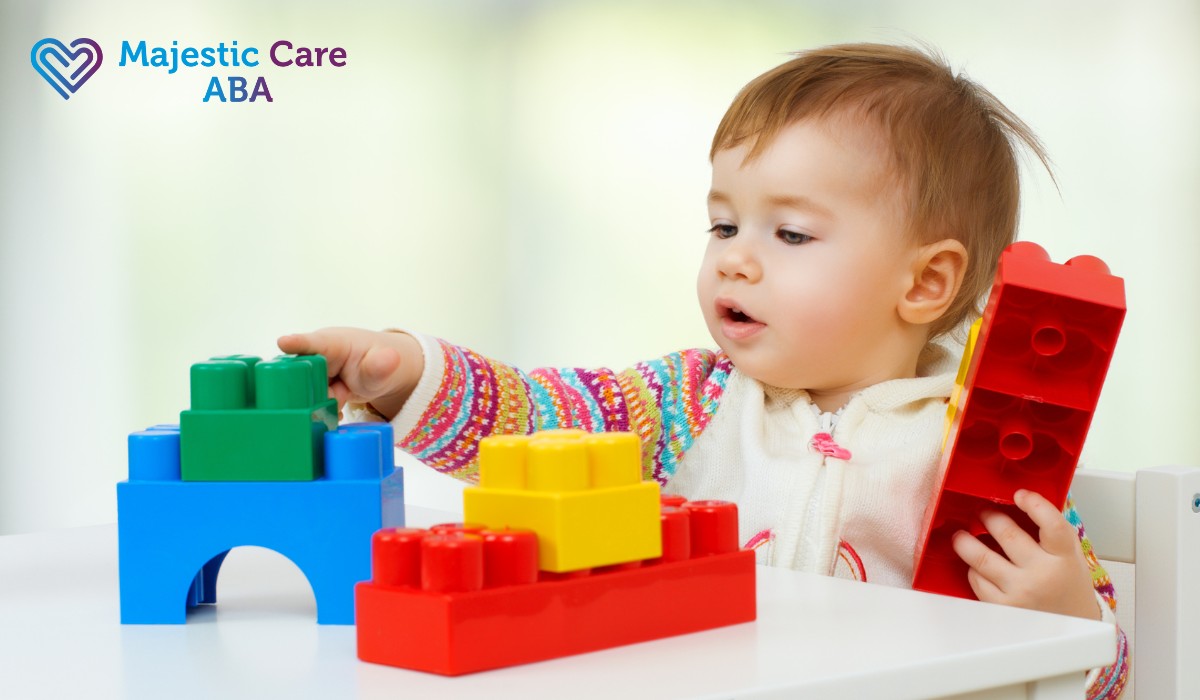
Understanding comorbidity in autism isn’t just an academic exercise—it directly shapes the support your child needs. As you’ve seen, anxiety, ADHD, and other overlapping conditions influence behavior, learning, and emotional well-being in profound ways. The best outcomes emerge when interventions address all active challenges in an integrated, data-guided way.
This is where Majestic Care ABA comes in. With clinically guided, individualized ABA therapy, we help children and families navigate overlapping diagnoses—designing plans that account for attention difficulties, anxiety, sensory challenges, and more. Our goal is to empower children with functional skills, regulation strategies, adaptability, and independence.
If you’re exploring ABA therapy in Indiana, Colorado, or North Carolina for a child with autism who’s also managing anxiety, ADHD, or other overlapping conditions, Majestic Care ABA might be a great fit. Reach out to talk through your child’s unique profile and see how we can work together to build clarity, consistency, and steady progress in their journey.
Key Points:
For many parents, the autism diagnosis process can feel confusing and overwhelming. You may read about “Asperger’s,” “PDD-NOS,” or “autism spectrum,” and wonder what changed — and why it matters now. The Diagnostic and Statistical Manual of Mental Disorders, Fifth Edition (DSM-5) reshaped how professionals define and diagnose autism. Understanding what changed—and why those changes were made—can empower you to advocate better for your child when it comes to early detection, therapy planning (like ABA), and working with schools and clinicians.
In this article, we’ll walk you through how autism diagnosis under DSM-5 differs from earlier approaches, explore the rationale behind those changes, and explain why they matter in real life—especially for families seeking behavior therapy, early intervention, and clear support.
Before 2013, under DSM-IV (and DSM-IV-TR), autism fell under a group called Pervasive Developmental Disorders (PDD). The main categories included:
Each of these carried its own criteria and labels. But clinicians and researchers began noticing inconsistency in applying them. People diagnosed with Asperger’s in one clinic might meet criteria for PDD-NOS in another. The distinctions were often blurry.
By consolidating under a single “Autism Spectrum Disorder,” the DSM-5 aimed to reduce confusion, standardize diagnosis, and reflect scientific consensus that these conditions lie along a spectrum.
Other key characteristics of the DSM-IV system:
While DSM-IV facilitated many diagnoses over the years, its fragmentation and inconsistent usage led to calls for revision.
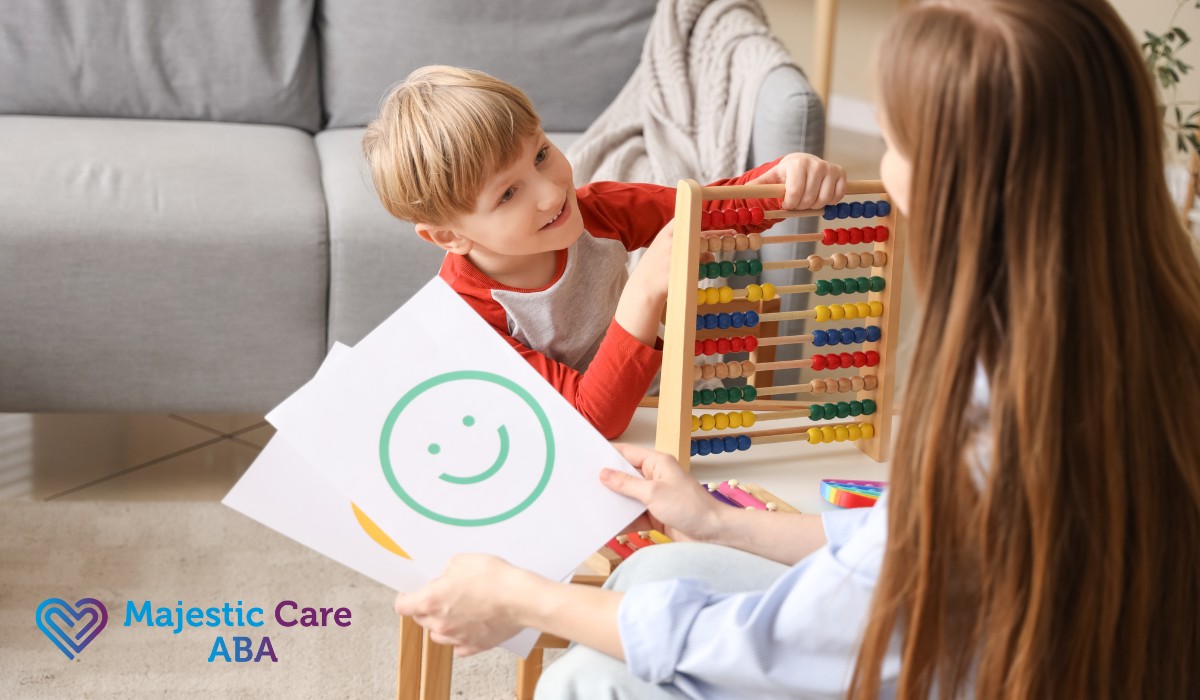
Before introducing the detailed criteria, here’s an introductory paragraph to frame the upcoming list of shifts:
The transition from DSM-IV to DSM-5 involved more than just renaming. It introduced structural changes to how autism is conceptualized and diagnosed. Below is a breakdown of the major changes — and what each means in practice.
With DSM-5, separate labels like Asperger’s, PDD-NOS, and classic autism were merged into one diagnosis: Autism Spectrum Disorder (ASD).
Under DSM-5, autism is diagnosed via two major symptom domains instead of three:
Within Domain A, clinicians look for persistent deficits across:
In Domain B, at least two of four types of restricted/repetitive behaviors must be present:
Importantly, DSM-5 formally recognizes sensory features (e.g. sensitivity to sound, texture) as part of its diagnostic criteria — these were not explicit in DSM-IV.
DSM-5 allows clinicians to consider presenting symptoms or history of symptoms (i.e. even if current behavior is masked or improved).
Rather than separate categorical labels, DSM-5 introduces three severity levels to describe required support:
Additionally, clinicians assign specifiers such as:
These specifiers help tailor intervention plans and clarify expectations.
Rather than focusing solely on symptom presence, DSM-5 encourages clinicians to weigh functional impairment — how much the symptoms affect everyday life (home, school, social). This aligns diagnosis more closely with intervention planning and eligibility for services.
For individuals who show deficits in social communication but do not meet the repetitive/restricted behavior criteria, DSM-5 introduces Social Communication Disorder (SCD). This acknowledges that communication challenges can exist independently, separate from autism per se.
In the 2022 Text Revision (DSM-5-TR), one subtle but important tweak was made: the phrasing in Criterion A changed from “as manifested by the following” to “as manifested by all of the following.” This change reaffirms that deficits must be across all listed aspects, not just some, to reduce misinterpretation.
The shifts in DSM-5 were not arbitrary. They were driven by research, clinical experience, and practical concerns. Here’s how they matter for detection, therapy planning, and family navigation.
By unifying under ASD, clinicians can avoid semantic debates over whether a child “has Asperger’s or PDD-NOS.” Having a clear, spectrum-based term improves communication among professionals (psychologists, pediatricians, therapists) and helps families understand that autism is not one-size-fits-all.
Because DSM-5 allows history and evolving presentation, clinicians can diagnose earlier—even when behaviors are subtle or masked. That supports earlier intervention, which is often more effective.
However, some critics argue the stricter criteria may exclude very mild cases (especially girls or those with subtle social challenges).
The addition of severity levels and specifiers allows behavior analysts, therapists, and educators to more precisely match support levels to each child’s current needs. Rather than “autism with language delay,” planning can now be “ASD, Level 2, with language impairment, co-occurring ADHD.”
Because DSM-5 emphasizes functional impairment, the diagnosis is more directly tied to eligibility for services (educational plans, insurance, early intervention). A clearer match between diagnosis and real-world needs helps reduce disputes over service access.
Sensory challenges (e.g. overreacting to noise, textures) are common in autistic individuals, but previously undervalued in diagnostic frameworks. Now, they are explicit, giving families and therapists a more holistic picture of the child’s sensory and behavioral profile.
By creating Social Communication Disorder as a separate diagnosis, DSM-5 prevents over-diagnosis of autism in cases where repetitive behaviors are absent. This distinction helps tailor supports differently.
The change in criteria meant that prevalence estimates and research participant pools had to adapt. Some studies show DSM-5 may reduce false positives compared to DSM-IV. Still, others express concern about excluding individuals who would have previously received support.

Understanding diagnostic shifts is one thing. Knowing what to do with that understanding is another. Here’s how the DSM-5 changes translate in practical parenting terms.
Even though clinicians use the DSM-5 criteria, you as a parent can monitor your child’s behavior using those two domains (social communication + restricted/repetitive). If your child shows consistent deficits in both areas over time, that suggests a red flag worth evaluating further.
Because DSM-5 allows diagnosis even when behaviors aren’t fully manifest, push for early screening (such as during pediatric checkups or developmental assessments). Early and accurate diagnosis gives you more time to begin interventions.
When your child receives a diagnosis, ask what level and specifiers were assigned. That helps you understand what support might be needed now and later, and what interventions to prioritize.
With a formal DSM-5 diagnosis, you can often qualify for:
A diagnosis is a tool—not a limit. Two children with the same DSM-5 label may have widely different strengths, challenges, and pacing of progress. Use it with your therapy team to guide an individualized plan.
Because diagnostic criteria emphasize observable social-communication deficits and repetitive behaviors, some girls or children from cultures with differing social norms might mask traits and “fly under the radar.” If you sense something is off even without full criteria, advocate for more in-depth evaluation.
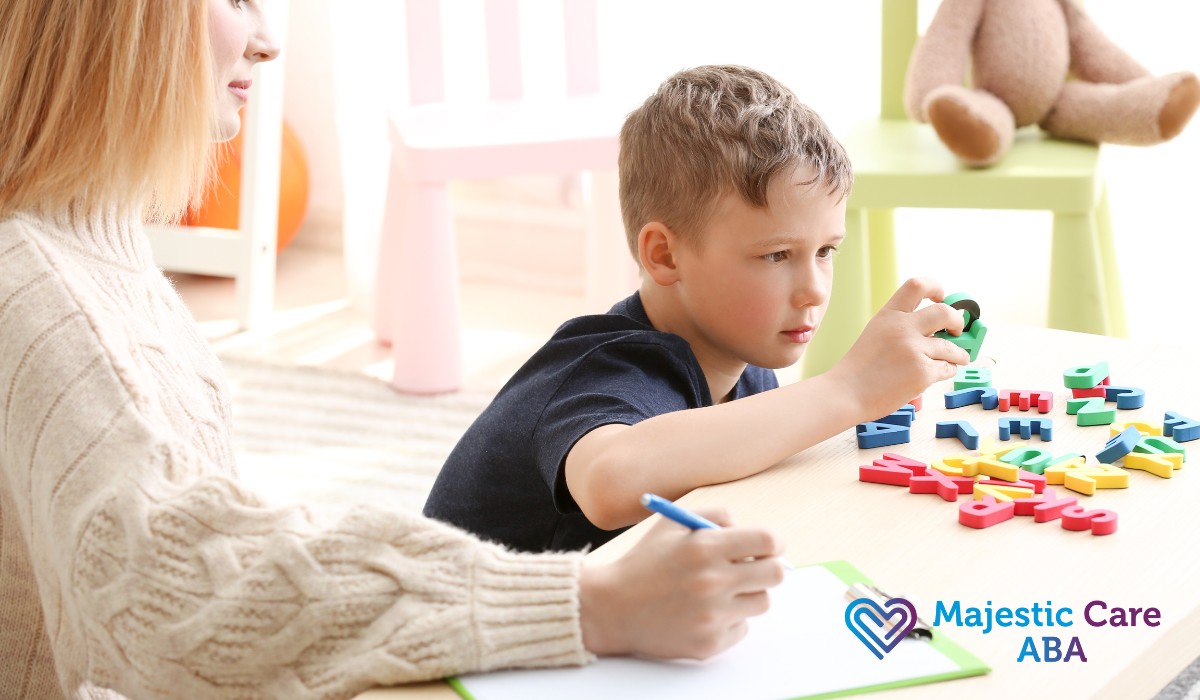
Applied Behavior Analysis (ABA) is a widely used, evidence-based approach to support children with autism. Because DSM-5 more clearly frames the functional impairments of ASD (social, communication, restricted behaviors), ABA therapists can use the diagnosis and specifiers to build more targeted, individualized programs.
With clarity from DSM-5:
When diagnosis is accurate and timely, ABA therapy is more efficient—because your child’s intervention plan starts from a clearer baseline of challenges and strengths.
No diagnostic system is perfect. It’s healthy to be aware of caveats.
Despite these challenges, DSM-5 provides a more unified, research-informed foundation than its predecessors.
The shift to DSM-5 in autism diagnosis brought meaningful restructuring: consolidating multiple prior diagnoses into a single Autism Spectrum Disorder, restructuring criteria into two core domains, formalizing severity levels and specifiers, and clarifying how early symptoms should be interpreted. These changes aim for consistency, earlier detection, better match to support systems, and clearer communication among clinicians, therapists, and families.
For parents, it means using the diagnosis as a tool—not a box—to guide early evaluation, advocacy, tailored therapy planning, and unlocking services.
If you’re searching for quality ABA therapy grounded in the context of this modern diagnostic framework, Majestic Care ABA is here to help. Our applied behavior analysis services are built on understanding each child’s DSM-5 profile and tailoring interventions based on severity, communication needs, sensory features, and functional goals.
Whether you’re in ABA therapy in Colorado, Indiana, or North Carolina—if your family is seeking compassionate, data-driven ABA therapy—reach out to us at Majestic Care ABA. We’d love to walk with you in translating diagnosis into meaningful progress.
Autism can make everyday sensations feel intense. Sleep might be hard to find. Anxiety can appear without warning. So, how do weighted blankets help autism? These blankets use deep touch pressure to soothe the nervous system. Imagine a gentle, even hug across the body. Studies suggest this pressure can trigger oxytocin, a hormone linked to relaxation and social connection (Gee et al., 2020). Weighted blankets for autism aim to increase comfort, ease anxiety, and promote calm. They aren’t a cure-all, but many individuals on the spectrum find them comforting. Could a weighted blanket be the small change that leads to better sleep and calmer days?

Weighted blankets use deep touch pressure therapy (DPT). This gentle pressure activates the parasympathetic nervous system, slowing the heart rate and lowering cortisol, the stress hormone (Bolic Baric et al., 2021).
Key mechanisms include
Most weighted blankets are filled with:
| Material | Benefits |
| Glass beads | Even weight distribution, hypoallergenic |
| Plastic pellets | Durable, lightweight, washable |
| Ball bearings | Smooth texture, consistent pressure |
The weight is evenly spread, creating a sense of security. For individuals with autism, this can reduce sensory overwhelm and provide a calming anchor during the day or night.
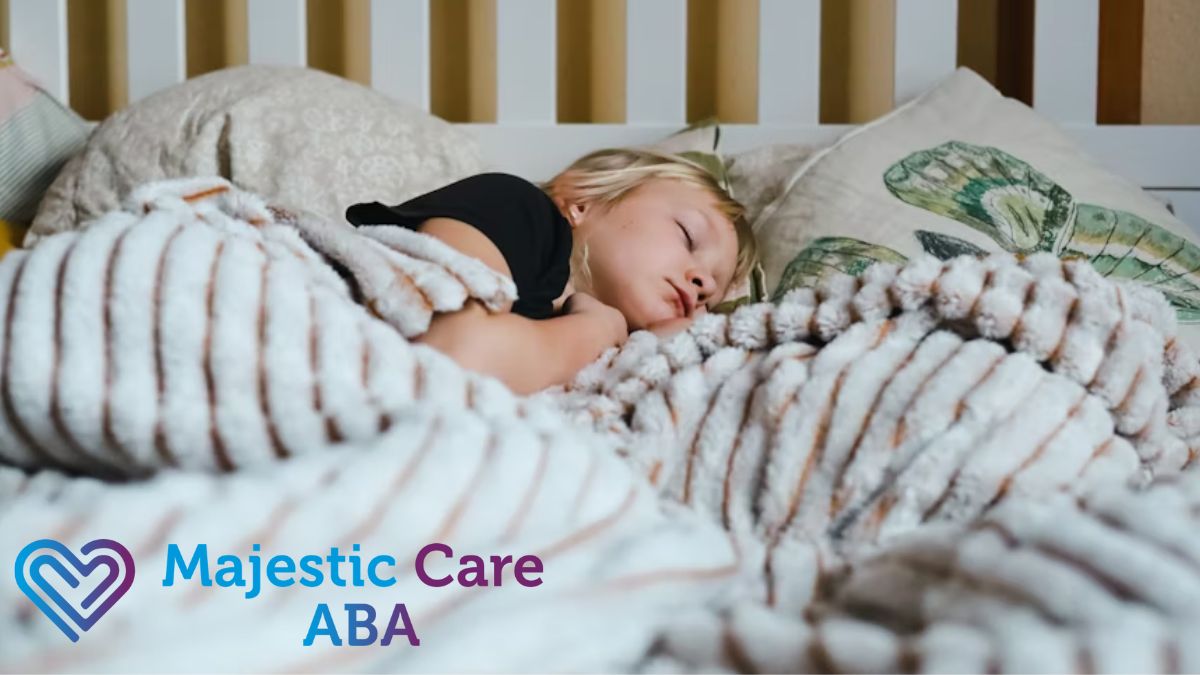
Weighted blankets are gaining attention as a supportive tool for people with autism. Their benefits are mostly related to sensory regulation, anxiety reduction, and sleep support.
Sleep disturbances affect 40 to 83% of individuals with autism (AJ Schwichtenberg et al., 2022). Weighted blankets may not always increase total sleep hours, but they can help:
Even small improvements in sleep routines can positively affect daytime behavior, mood, and focus.
Autistic individuals often have heightened sensory sensitivities. Weighted blankets provide:
The deep touch pressure can significantly reduce anxiety. Sarah, a 16-year-old, reported feeling more relaxed and less overwhelmed when using a weighted blanket during stressful periods. According to studies weighted blankets help reduce anxiety in adults in psychiatric settings (Stanley Wong et al., 2024).
While research is still emerging, several studies have explored weighted blankets for autism:
Although findings vary, most research supports enhanced comfort, calm, and mood improvements, even if total sleep hours remain unchanged.
Selecting an appropriate blanket ensures both comfort and effectiveness. Key factors include:
Weighted blankets support several areas in autism management:
Autistic individuals may struggle with excessive sensory input. Weighted blankets:
By activating the parasympathetic nervous system and releasing serotonin and melatonin, weighted blankets can:
Even if sleep duration doesn’t increase dramatically, the quality and sense of security can improve.
Weighted blankets work best alongside other sensory tools:
Combining these strategies can create a multi-sensory, calming environment for autistic individuals.
Introducing a weighted blanket should be gentle:
Ongoing studies aim to:
Weighted blankets may become a standard tool for sensory therapy and emotional support, providing wider benefits beyond autism.
John, 10 years old: Struggled with sleep. After using a weighted blanket, he fell asleep faster and stayed asleep longer. Morning mood improved, and daytime behavior stabilized.
Rachel, 16 years old: Experienced anxiety and sensory overload. Weighted blankets helped her feel calmer, better tolerating daily sensory input.
Ethan, 6 years old: Had challenges with self-regulation. Using a weighted blanket during therapy sessions improved focus and engagement, with calmer behavior at home.
These examples highlight how weighted blankets can serve as an effective sensory tool for different age groups and challenges.
Weighted blankets are generally safe but should be used with caution:
Yes. The deep pressure provides a calming effect even during daily activities, reducing stress and overstimulation.
Start with 10% of body weight plus 1–2 pounds, and adjust based on comfort. Observation is key.
No. Weighted blankets complement therapies like occupational therapy, sensory integration exercises, and behavioral interventions.
Yes. Soft, breathable, hypoallergenic fabrics like cotton or bamboo are ideal for comfort and sensory acceptance.
Usage varies. Many benefit from nightly use or short periods during sensory overload, with gradual introduction for adjustment.

Weighted blankets for autism are more than a cozy accessory. Majestic Care ABA in Indiana shows how deep pressure can gently calm the nervous system while offering a sense of security. Many families notice reduced anxiety, less stress, and better body awareness. Majestic Care ABA also points out that some children experience improved sleep and a brighter morning mood with regular use. Results vary from person to person, but research and anecdotal evidence suggest weighted blankets can help create a calmer, more grounded environment. If you want to see how a weighted blanket might support your child’s sensory needs, reach out to us for tips and guidance personalized to your family’s routine.
Key Points:
Helping a child with autism communicate can feel like unlocking a secret language. Many parents watch their children struggle to express needs, leading to frustration and emotional outbursts. The Picture Exchange Communication System, or PECS, was created to bridge that gap—offering a way for kids to communicate even when words are hard to come by.
But does PECS really work? And how can families make it part of everyday life? Let’s take a closer look at how PECS supports communication in children with autism, how it’s implemented, and how it can be combined with ABA therapy for the best outcomes.
Yes. The Picture Exchange Communication System (PECS) has been shown to effectively help many children with autism develop functional communication skills. By teaching children to exchange pictures for desired items or actions, PECS builds a foundation for meaningful interaction and reduces frustration caused by communication barriers.
Over time, many children progress from using pictures to verbal communication as their confidence and understanding grow. While results vary for each child, research and clinical practice consistently support PECS as a valuable tool for enhancing communication in children with autism.
PECS stands for Picture Exchange Communication System. It’s a structured way for individuals—especially children on the autism spectrum—to communicate by using pictures instead of spoken words.
Developed in the 1980s by Dr. Andy Bondy and Lori Frost, PECS is based on behavioral principles from Applied Behavior Analysis (ABA). The method focuses on teaching functional communication: not just labeling pictures, but using them to ask for something or share an idea.
Children using PECS start by handing over a simple picture (for example, of a cookie) to request that item. Over time, they learn to combine symbols, use sentence strips like “I want [item],” and even respond to questions or express emotions.
What makes PECS unique is that it’s not reliant on technology or speech devices. All it needs is a set of laminated images or cards representing objects, actions, and concepts relevant to the child’s life.

PECS follows a six-phase teaching protocol that builds communication step by step. Each phase focuses on developing independence and motivation, ensuring that children don’t just learn symbols but understand their meaning.
Here’s a breakdown of how PECS is taught:
The child learns to exchange a single picture for a desired item or activity. A communication partner helps prompt the exchange, while another person acts as a physical prompter if needed.
The child learns to initiate exchanges independently, even when the communication partner is farther away. This helps generalize communication beyond structured sessions.
Children begin to choose between multiple pictures to make specific requests (for instance, picking between “juice” and “toy”).
Using a sentence strip, the child learns to form sentences like “I want swing” or “I want snack.”
The learner starts to respond to simple questions such as “What do you want?”—a major leap toward conversational communication.
Finally, children learn to express more than wants and needs. They begin to comment on the world around them: “I see birds” or “I hear music.”
Each stage helps build not just vocabulary but confidence—the understanding that communication gets results.
PECS has been widely studied and used in classrooms and therapy settings across the world. Parents often see positive changes within weeks of consistent use.
Here are the major benefits explained in depth:
One of the biggest sources of meltdowns in children with autism is being unable to express what they want. PECS provides a visual outlet. When a child realizes they can get what they need through pictures, stress levels drop and emotional regulation improves.
Contrary to common fears, PECS does not stop children from speaking. Many actually start vocalizing after using pictures to communicate. Once children experience the success of being understood, motivation to use words often increases.
PECS involves a natural exchange between two people—eye contact, reaching out, waiting for a response. Over time, these micro-interactions strengthen social skills that speech alone doesn’t always teach.
Children can use their picture cards at home, in therapy, or at school. With consistent training, communication becomes part of everyday routines—from snack time to playdates.
Instead of relying on parents to guess what’s wrong, children using PECS can initiate their own communication. This autonomy empowers them and reduces caregiver stress.
When guided by a Board Certified Behavior Analyst (BCBA), PECS becomes more than a communication system—it becomes a bridge toward expressive language and self-advocacy.
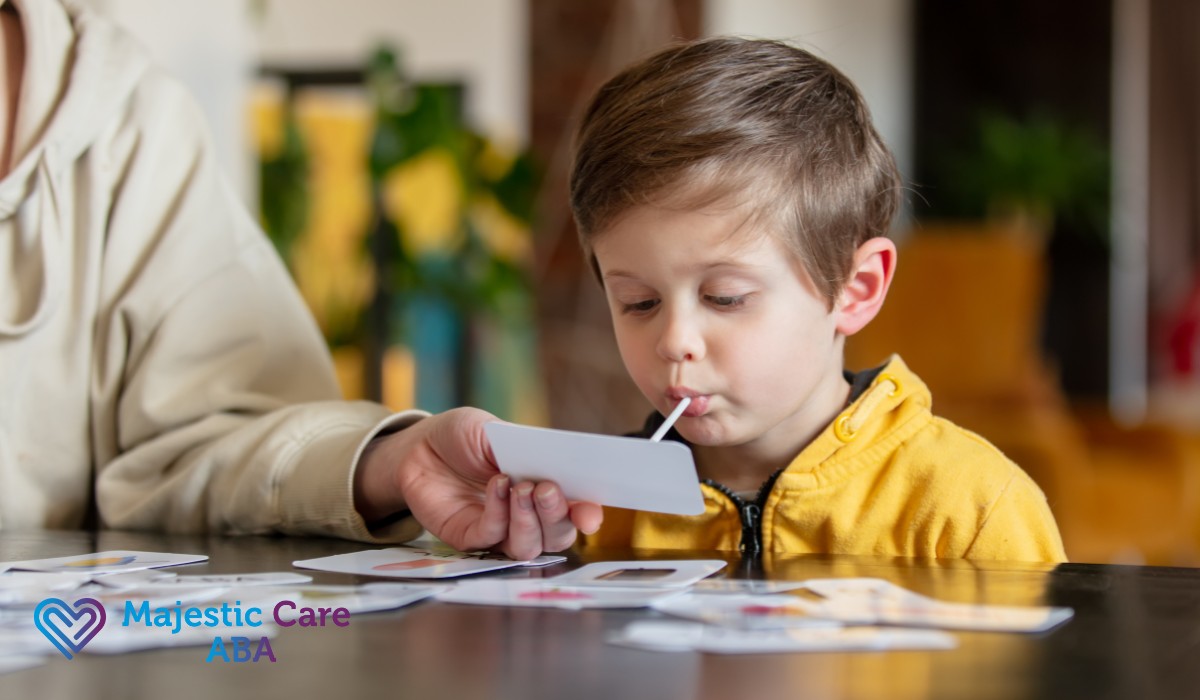
While PECS can be life-changing, it’s not always smooth sailing. Parents often encounter obstacles in the learning process. The good news is that most of these can be resolved with consistency, coaching, and collaboration between families and therapists.
If the chosen pictures don’t represent something the child actually wants, they won’t engage. Start with highly preferred items—favorite snacks, toys, or activities—and build from there.
Some children may not initially grasp that a picture represents a real object. You can strengthen this connection by pairing the image with the actual item repeatedly during daily routines.
Progress can stall if PECS is used only in therapy. Parents, teachers, and caregivers should all use the same system, ensuring the child gets regular practice in different settings.
The goal isn’t to stay on pictures forever. With time, therapists can fade prompts and encourage spoken words, gestures, or device use as the child’s communication skills evolve.
If teachers or relatives aren’t trained in PECS, they might not respond correctly to exchanges. Providing them with quick training or visual guides ensures consistency for the child.
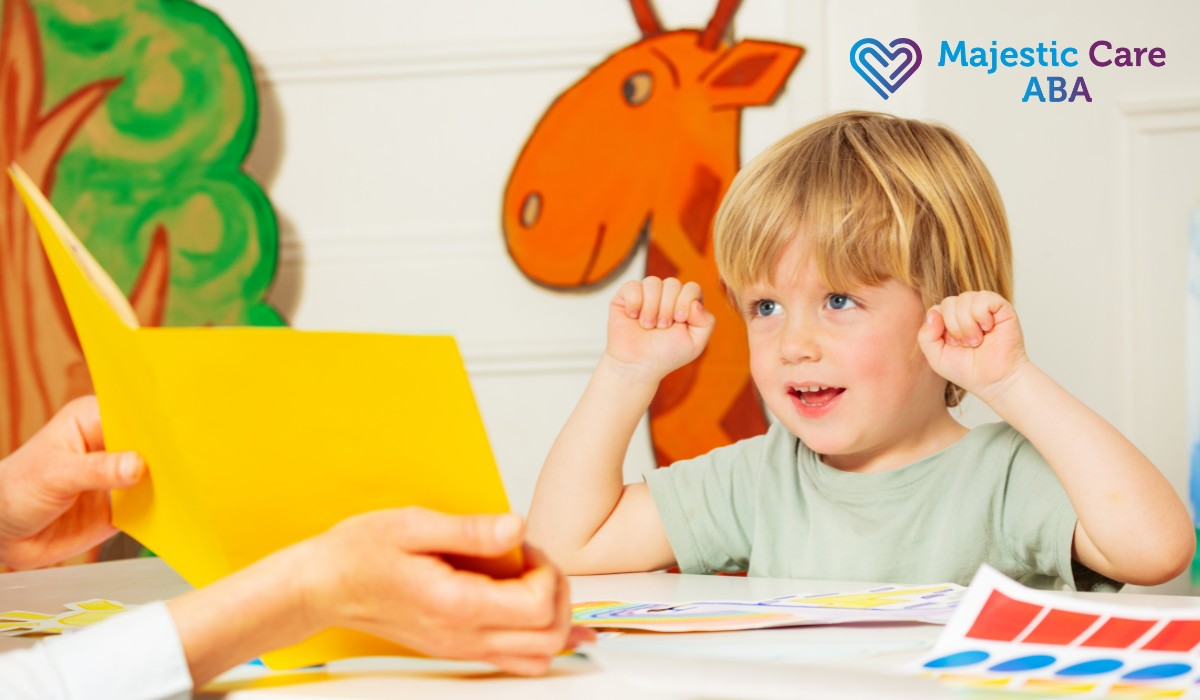
Parents sometimes wonder if PECS is the only option—or the best one. In truth, it’s one of several evidence-based augmentative communication systems used in autism therapy.
Augmentative and Alternative Communication (AAC) devices use speech-generating technology. These can be powerful tools, especially for older children. However, PECS is often a starting point because it’s simple, portable, and teaches the core idea of symbolic communication before moving to electronic aids.
Sign language is another effective option, but it requires fine motor coordination and the communication partner’s knowledge of signs. PECS, on the other hand, can be understood by anyone, regardless of their training.
PECS doesn’t replace speech therapy—it complements it. Speech therapists often collaborate with ABA professionals to combine PECS with articulation and language-building exercises.
Each child’s needs differ. That’s why programs like Majestic Care ABA use individualized assessments to determine whether PECS, speech therapy, or a blend of both will best support progress.
PECS thrives when used consistently across daily routines. The home is one of the most powerful places to practice because communication opportunities are everywhere.
Here’s how you can make it work day-to-day:
Have PECS cards easily accessible in common areas—on the fridge, near toys, or on a communication board. The more reachable they are, the more likely your child will use them spontaneously.
Instead of setting aside “PECS time,” use it during meals, play, or errands. Encourage your child to hand you a picture when asking for food, or point to a symbol during playtime.
When your child uses a picture, honor the request right away. That immediate success strengthens the understanding that communication works.
As your child’s interests and routines change, so should their PECS set. Outdated pictures can cause confusion or reduce motivation.
ABA therapists help reinforce PECS through prompting, reinforcement, and generalization techniques. This makes communication skills more natural and long-lasting.
When parents and therapists collaborate closely—sharing data, discussing progress, and practicing the same strategies—children make faster, more meaningful gains.
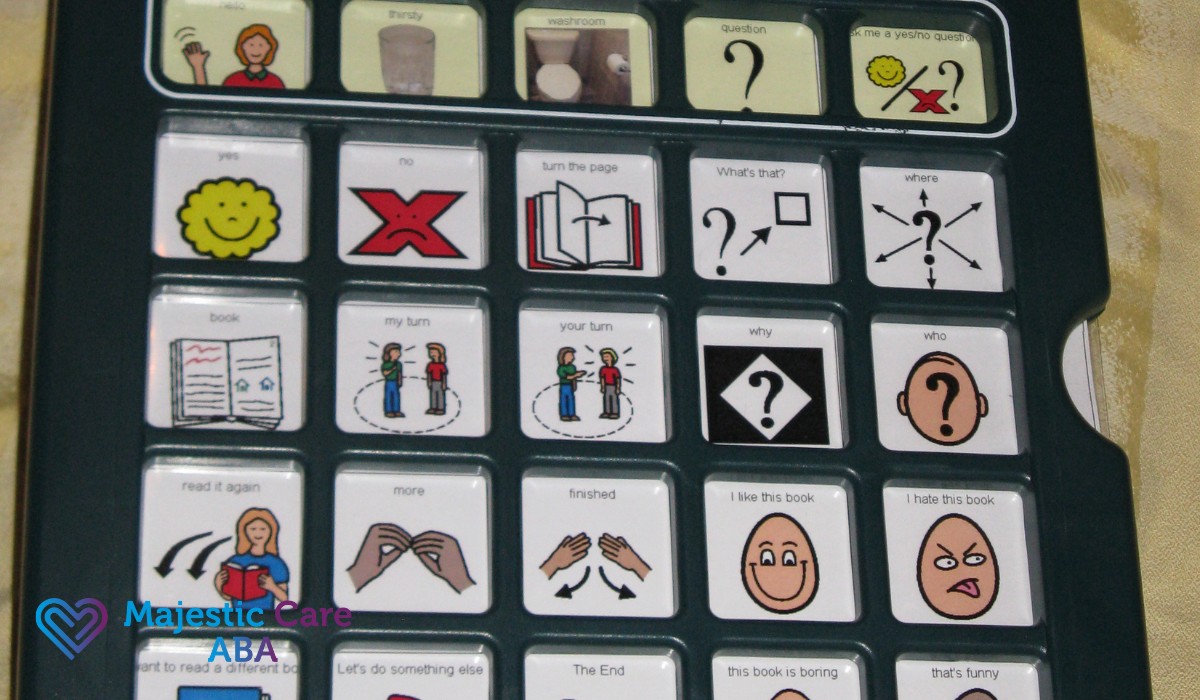
ABA therapy and PECS often go hand in hand. ABA focuses on understanding why behaviors occur and teaching replacement behaviors—like communication—instead of frustration or aggression.
Through individualized programs, ABA therapists can:
The focus is always on independence, confidence, and meaningful communication—not rote repetition.
PECS is more than laminated pictures—it’s a doorway to understanding, connection, and self-expression. For many families, it’s the first time their child can clearly communicate a need or desire, and that moment changes everything.
If you’re exploring how PECS or ABA therapy can help your child communicate more effectively, Majestic Care ABA offers personalized programs designed to meet each child’s unique communication goals.
With services available for ABA therapy in Indiana, Colorado, and North Carolina, we’re here to help families build stronger, more confident communicators—one picture at a time.
Contact us today to get started or learn more about how we can support your child’s communication journey.
At Majestic Care ABA Therapy, we are honored to support children and families on their journey toward growth and success. Our compassionate and evidence-based approach has helped countless families see meaningful progress in their child’s development. Don’t just take our word for it—hear from families who have experienced the life-changing impact of ABA therapy with us.




We’re in South Bend, Indiana and ready to serve. Our ABA therapy center combines focused care with effective systems to support your child’s success. Spots are limited—claim yours today!